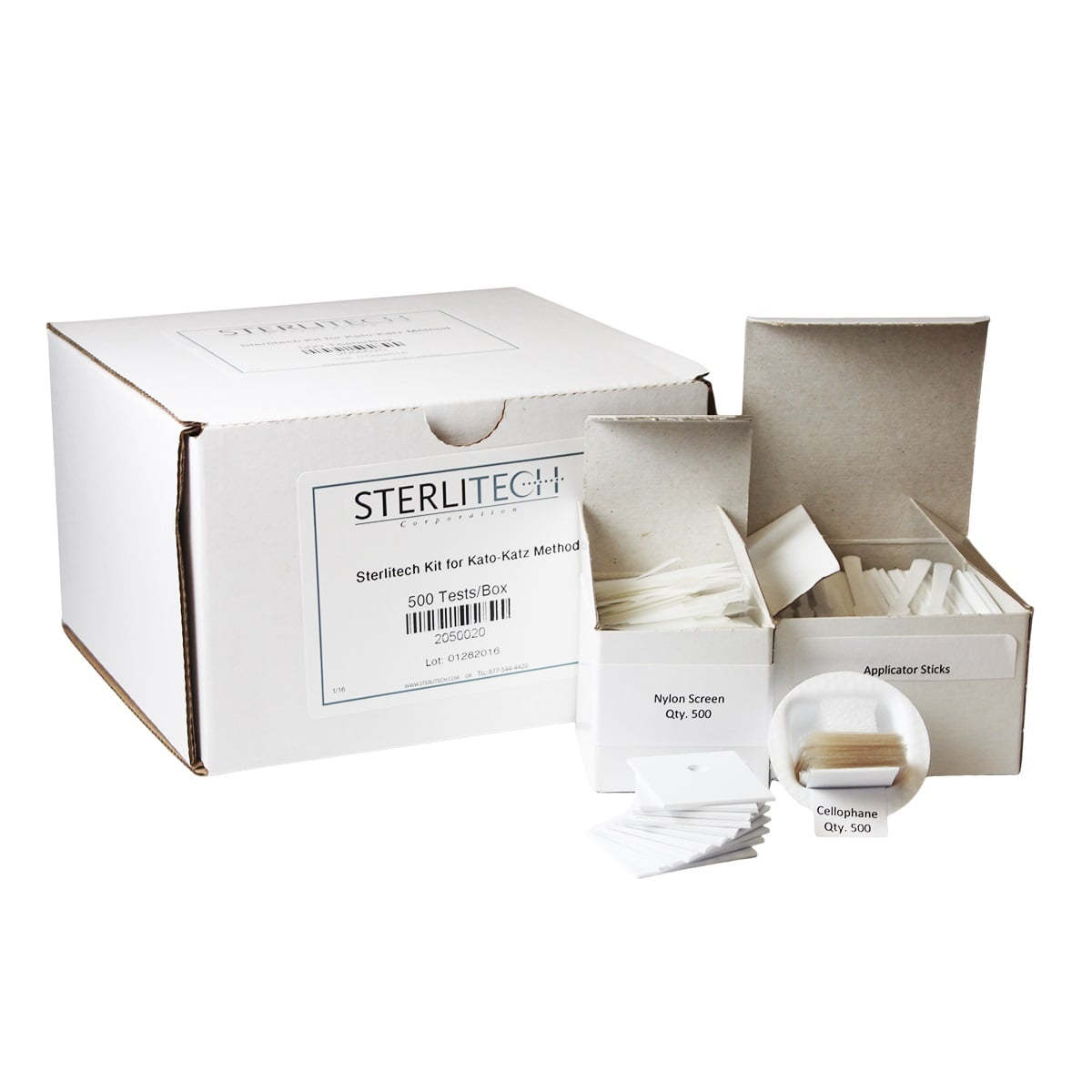Update to the Sterlitech Kato-Katz Kit

Since 2016 we have supplied over 1000 Sterlitech Kato-Katz Kit to clinicians and researchers—enough materials to perform over 500,000 tests. These kits are used to efficiently diagnose intestinal schistosomiasis and soil-transmitted helminthiasis (STH) in the field. Recently, Dr. Johnny Vlaminck, a postdoc at the Parasitology Lab of Ghent University, used our kit during his fieldwork in Lao PDR and noticed a point of clarification in the product instructions.
The Kato-Katz Kit datasheet reads: Preparation of the slide is now complete. The slide can be read after 24-hour incubation at room temperature. This statement was derived from the World Health Organization (WHO) method which advises that prepared Kato-Katz slides should be held for 24 hours before microscopic evaluation to allow for sample clearing.[1] However, Dr. Vlaminck recognized that this instruction was potentially misleading. While a 24-hour hold does help facilitate sample clearing and subsequent evaluation of Ascaris, Trichuris, and intestinal Schistosoma eggs, he was aware the WHO method notes that hookworm eggs begin to disappear approximately 30 minutes after slide preparation.[1][2] Also, his field experience confirmed that hookworm eggs can completely disappear if slides are not read within one hour of preparation. Although the disappearance of hookworm eggs is well known in the STH research community, Dr. Vlaminck was concerned that our instructions may cause misunderstandings and false-negative results among persons with limited experience. So, he kindly contacted Sterlitech to convey his concerns and recommend that the instructions be corrected.
Recognizing that he made a valid case, we have updated Kato-Katz Kit Datasheet to include a section on proper reading of the prepared slides. Future kits will include these updated instructions. We thank Dr. Vlaminck and his team for sharing their expertise to help us improve the Sterlitech Kato-Katz Kits. Their lab has been collaborating with WHO in monitoring drug efficacy for STH. Drug efficacy monitoring is among the key components of the WHO strategy to control and eliminate neglected tropical diseases.[3][4]
The Kato-Katz Kit complements the Schistosome Test Kit for the diagnosis of schistosomiasis. Both kits are based on the WHO recommended methods. You can check Sterlitech Diagnostic Test Kits to learn more.
References
[1] World Health Organization. (1991). Basic laboratory methods in medical parasitology. Geneva: World Health Organization. Retrieved from
[2] World Health Organization. (2008, February). Field Tools – Measuring the Severity of Disease. Action Against Worms. Retrieved from https://www.who.int/neglected_diseases/preventive_chemotherapy/pctnewsletter/en/
[3] World Health Organization. (2018). Seventh meeting of the Working Group on Monitoring of Neglected Tropical Diseases Drug Efficacy. Retrieved from https://www.who.int/neglected_diseases/resources/WHO-CDS-NTD-PCT-2018.06/en/
[4] World Health Organization. (2017). Integrating neglected tropical diseases into global health and development: fourth WHO report on neglected tropical diseases. Retrieved from https://www.who.int/neglected_diseases/resources/9789241565448/en/
- Most Viewed Blog Articles (5)
- Company News (285)
- Emerging Technologies (64)
- Microbiology and Life Science News (93)
- Water and Fluid Separation News (97)
- Filtration Resources (93)
- Product News (19)


![Join Sterlitech at BIO 2024 [Booth #5558]: Exploring the Future of Biotechnology](https://www.sterlitech.com/media/blog/cache/300x200/magefan_blog/b4.jpeg)



